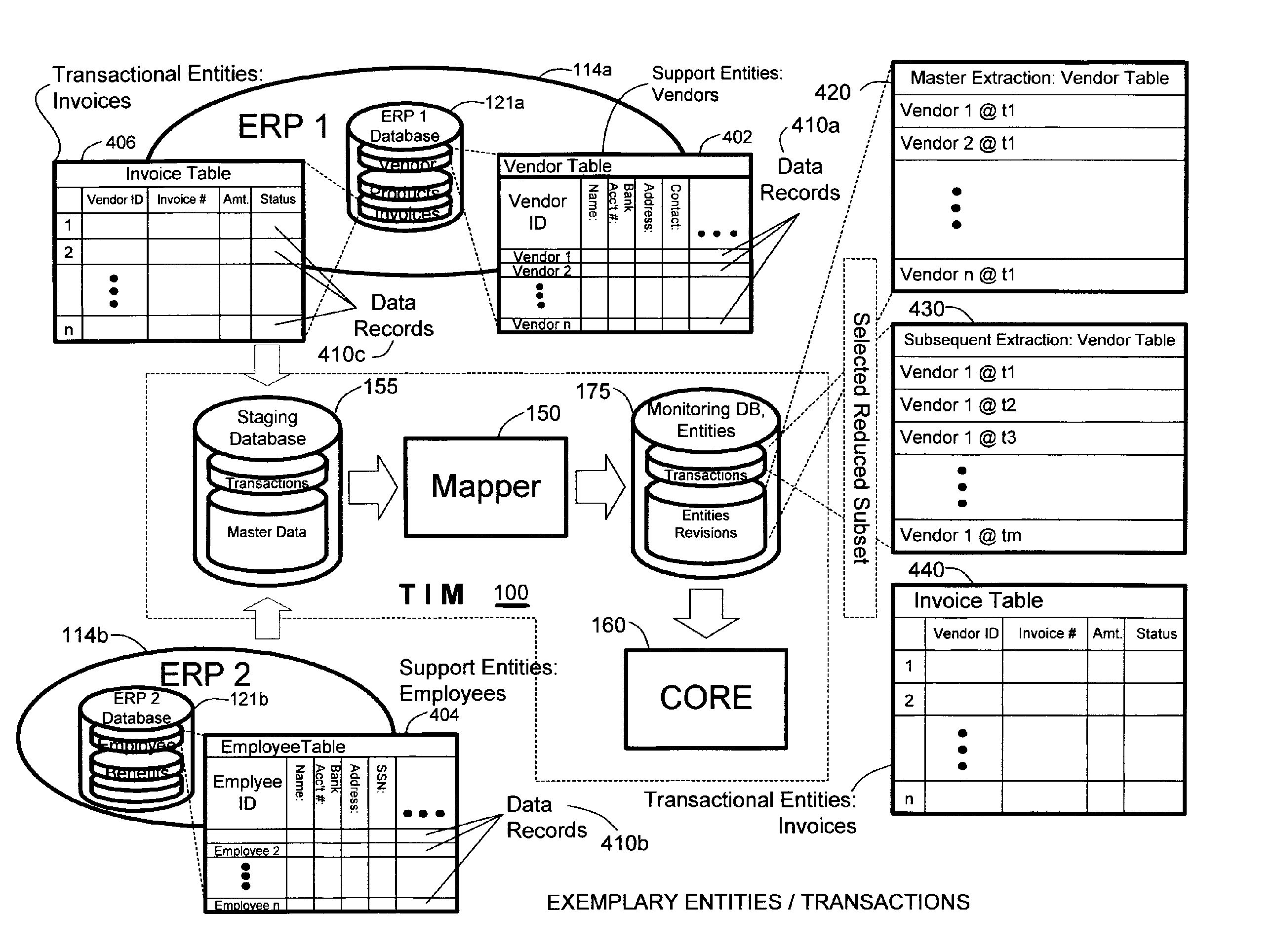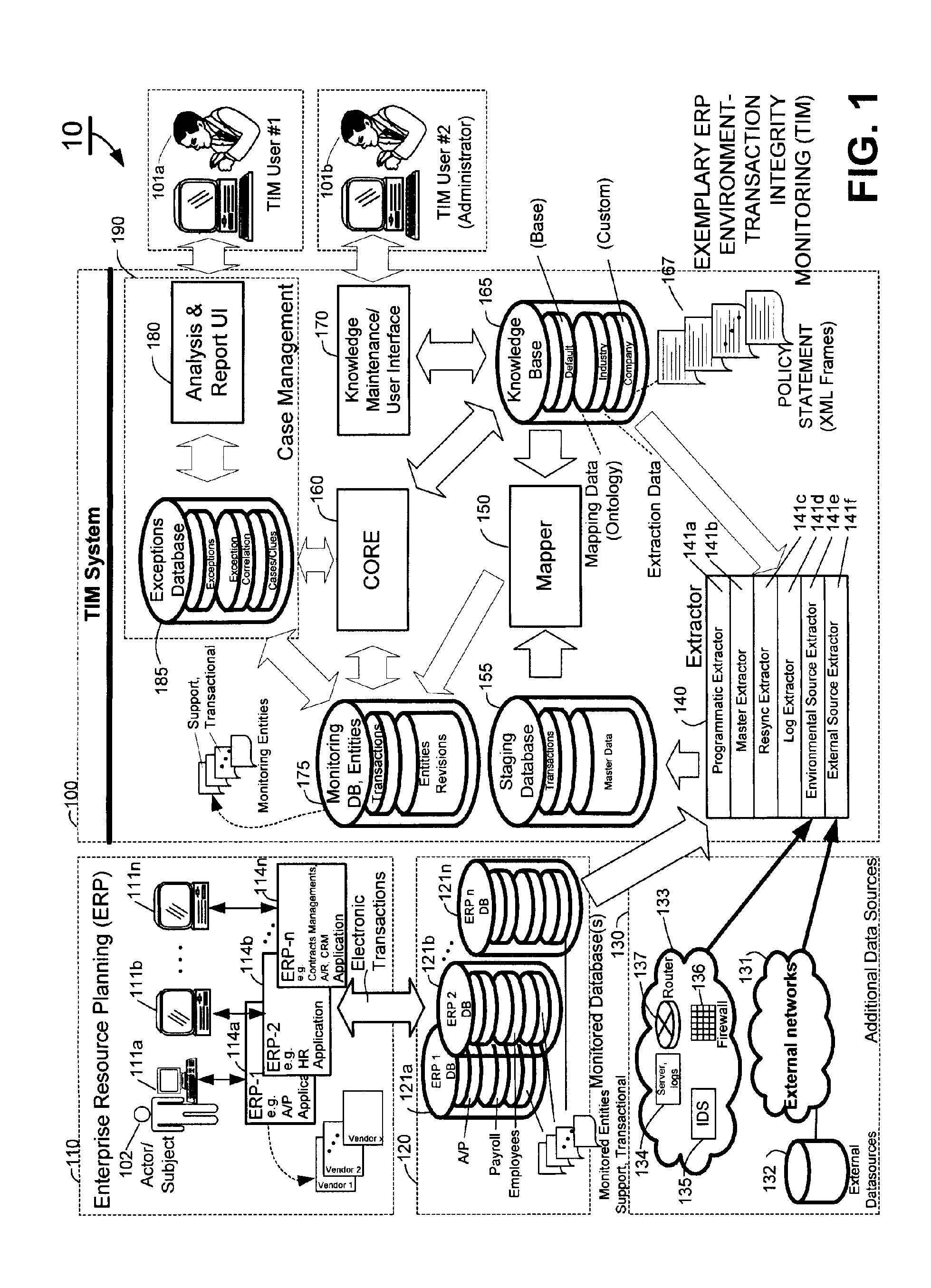Methods and systems for monitoring transaction entity versions for policy compliance
a technology of transaction entity and monitoring method, applied in the field of compliance monitoring of electronic enterprise transactions, can solve the problems of affecting the integrity of transactions and reporting of an enterprise, affecting the business continuity of the enterprise, so as to reduce asset loss, increase operational effectiveness, and increase corporate and shareholder confiden
- Summary
- Abstract
- Description
- Claims
- Application Information
AI Technical Summary
Benefits of technology
Problems solved by technology
Method used
Image
Examples
Embodiment Construction
[0097] Prior to a detailed description of the invention(s), the following definitions are provided as an aid to understanding the subject matter and terminology of aspects of the present invention(s), and not necessarily limiting of the invention(s), which are expressed in the claims. Whether or not a term is capitalized is not considered definitive or limiting of the meaning of a term. As used in this document, a capitalized term shall have the same meaning as an uncapitalized term, unless the context of the usage specifically indicates that a more restrictive meaning for the capitalized term is intended. A capitalized term within the glossary usually indicates that the capitalized term has a separate definition within the glossary. However, the capitalization or lack thereof within the remainder of this document is not intended to be necessarily limiting unless the context clearly indicates that such limitation is intended.
Definitions / Glossary
[0098] Actor: an individual respons...
PUM
 Login to View More
Login to View More Abstract
Description
Claims
Application Information
 Login to View More
Login to View More - R&D
- Intellectual Property
- Life Sciences
- Materials
- Tech Scout
- Unparalleled Data Quality
- Higher Quality Content
- 60% Fewer Hallucinations
Browse by: Latest US Patents, China's latest patents, Technical Efficacy Thesaurus, Application Domain, Technology Topic, Popular Technical Reports.
© 2025 PatSnap. All rights reserved.Legal|Privacy policy|Modern Slavery Act Transparency Statement|Sitemap|About US| Contact US: help@patsnap.com



